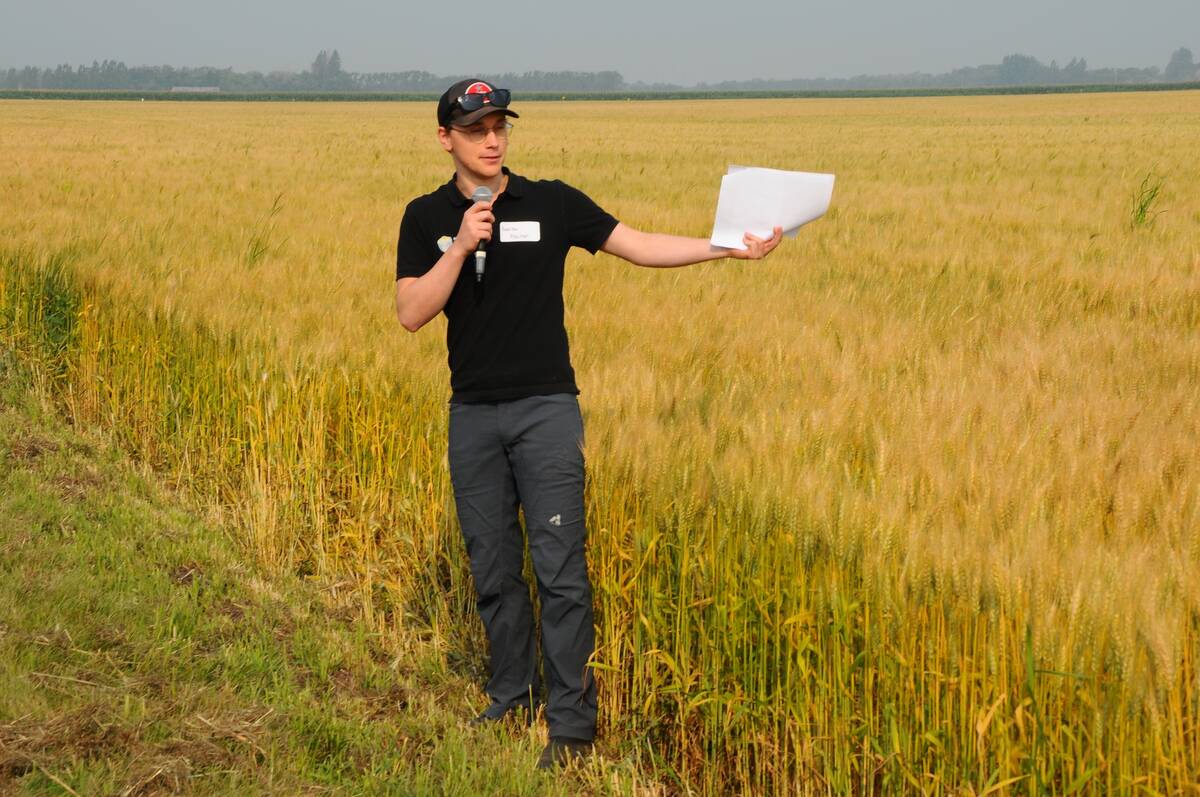Have you ever wanted to feel inside a cow’s stomach? Or find out what you can do with a degree in veterinary medicine?
You’ll get your chance Oct. 1-4 when the Western College of Veterinary Medicine at the University of Saskatchewan hosts VetaVision.
Held every three years, VetaVision is a collection of interactive displays designed to introduce the public to veterinary medicine.
“It’s a chance to showcase the veterinary profession, veterinary education and the college,” said college spokesperson Myrna MacDonald.
Read Also

On-farm research translates science into ‘farmer speak’
Manitoba’s three major agriculture grower groups support farm-level research to test crop science under the shifting conditions of real farmer fields.
Fourth year student Karen Wagner said most people don’t know what veterinarians deal with on a regular basis.
“You can take your pet to the vet to get its vaccinations done, but that’s all you see,” she said.
Planning for the 2009 VetaVision began just after the last one in March 2007. The 2006-07 first year students were put in charge of hosting and planning this October’s event, but students who have enrolled since then have also become involved.
Students use the three-year period between events to plan the wide range of displays. This way, they can ensure that each VetaVision isn’t too similar to the previous one.
“Every three years we have a whole new crowd of people that would be interested in coming,” Wagner said. “It makes it more exciting to have it every three years.”
Students began building the booths last year, finishing in April, but Wagner said there is preparation beyond that.
Nearly 30 interactive displays have been developed, each aiming to provide an entertaining environment while teaching the public. One of the event’s more popular displays is the fistulated cow.
Cinnamon, one of the college cows, has had a plugged hole surgically cut into her stomach. Students use this for research purposes, but it will also allow the public to reach into Cinnamon to feel her rumen, one of the cow’s four stomachs.
“It’s usually pretty popular with all the kids, but some people think it’s disgusting,” Wagner said.
Other booths include birds and exotic pets, radiology, small and large animal surgery, and a bugs, germs and worms display. There is also a toxicology booth, for which producers are encouraged to bring in a small sample of feed to test.
The event will also feature live demonstrations, a petting zoo and presentations by veterinary professionals.














